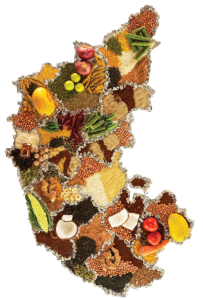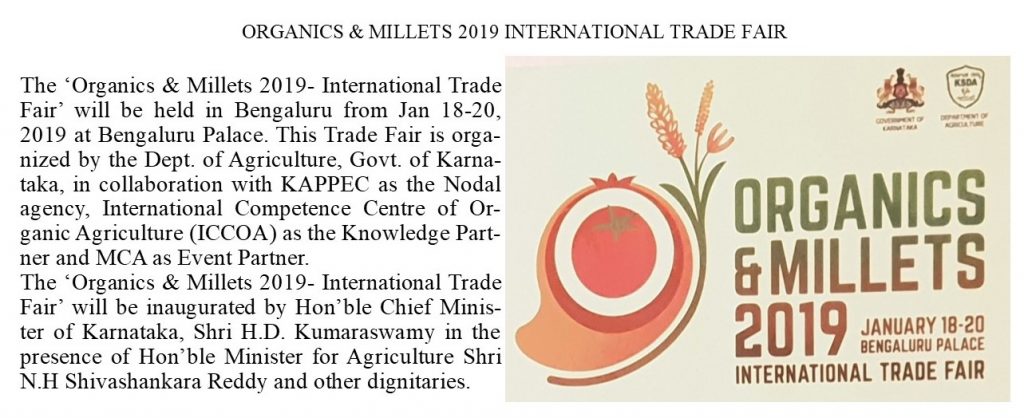Organics and Millets : The Healthy Options. Switching to organic is not only a healthy option for the body, but also saves the environment as well.
Recent studies indicate that organically grown produce has more nutritional value than produce that which has been conventionally grown. Organic food has increased levels of nutrients, thanks to the fact that they are synthetic fertilizer and pesticide free. There is also no genetic modification. It is the presence of chemicals that cause an exhaustive range of diseases in humans. Heavy pesticide exposure can contribute to neurological issues, malfunctions, impairments, as well as creating toxicity within human body.


Millets are also naturally grown foods. Millets, a once popular food source, are slowly witnessing a gradual comeback into mainstream consumption. Just as organics, millets too have more nutritional value and health benefits when compared to similar products developed from rice and wheat. They are extremely nutritious and good for health and can be stored for long periods of time. They are gluten free and play a vital role in preventing health issues. Millets are rich in fiber and contain minerals such as phosphorous, iron, magnesium, potassium and zinc. Millets are good for heart health and can help reduce coronary blockages. The magnesium content in millets helps to effectively reduce blood pressure and risk of stroke and heart attacks. The potassium content in millets helps to widen blood vessels, enabling smoother flow of blood in the body. Millets also have ingredients that can help combat chronic diseases like cancer and other coronary diseases.
Millets also help in maintaining healthy sugar levels and reduces the chance of contracting type 2 diabetes. Their rich magnesium content help to stimulate the level of insulin in the body by increasing the efficiency of glucose receptors in the body. Rich in fiber, millets make for a healthy cereal, which can help in digestion and can relieve bowel issues. It helps in gastrointestinal problems and can ease in other diseases related to the liver and kidney. It can also help in reducing the risk of colon cancer.
Several kinds of millets are grown in India. Among the more widely known millets are ragi or finger millet, jowar or sorghum and Bajra or pearl millet. Completing the range are Foxtail millet, Barnyard millet, Proso millet and little millet. Ragi is loaded with protein and amino acids and good for brain development in kids. Jowar, used to make rotis helps in reducing cholesterol level. It is enriched with iron and can be used as a substitute for people who have wheat intolerance. Bajra is rich in fibre, proteins and iron, and contains minerals such as magnesium and calcium. Foxtail millet contains blood sugar balancing carbohydrates along with iron and calcium. Barnyard millet also has high fibre content and helps in weight loss. It contains calcium and phosphorous and is good to combat bone diseases. Proso millet also helps in weight loss. Little millet also helps in weight loss and is packed with B-vitamins, minerals like calcium, iron, zinc and potassium. Millets are alkaline and digests smoothly and slowly. The serotonin production capacity of millets is calming and acts as a stress reliever.
Millets have the potential to replace rice as a staple and combines easily with local pulses and vegetables. The unique character of millets is that it can blend with common staples without any pronounced flavours. One of the deterrents of moving completely to organics is the cost factor that is involved. Organic farmers do not use artificial means to grow their produce. This effectively means that the soil needs to be prepared manually without using chemical weed killer. This leads to lower production and high overheads, which in turn pushes up the price.
While there is an increasing acceptability of millets especially in the ready to eat form, there still remains a lot to be done in terms of spreading awareness about both organics and millets in order to increase their consumption. This would result in an increased demand and subsequently prove beneficial to farmers.




Dr. C. N. Manjunath
Director,
Sri Jayadeva Institute of Cardiology (SJICR),
Bannerghatta Main Rd, Phase 3,
Jayanagara 9th Block,
Jayanagar, Bengaluru – 560069











